Is My Money Tree Dying? (8 Signs to Look For)
-
Pete Ortiz
- Last updated:
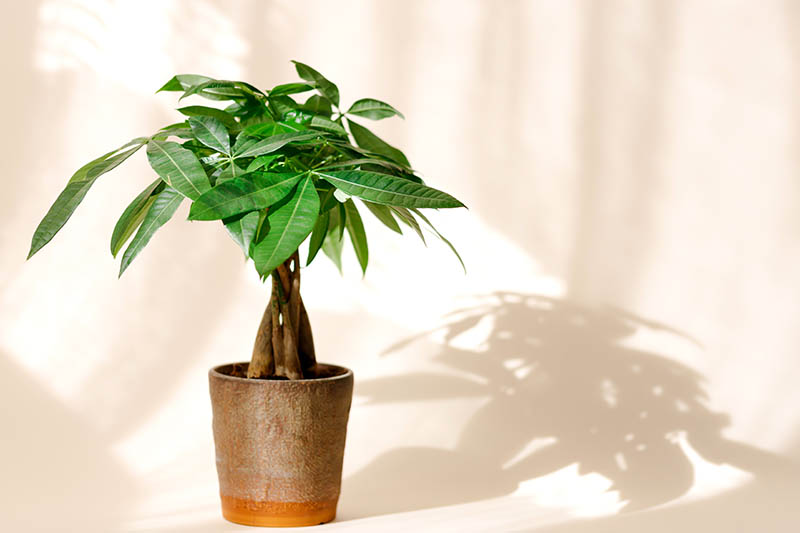
The money tree is a common sight in American households as a symbol of luck, prosperity, and good fortune. It’s a tropical wetland tree that prefers above-average temps, moderate watering, and indirect light. Money trees are quite resilient and sturdy and take little effort to grow. But this is only true if you know your way around potting, watering, and pruning.
The lack of proper maintenance may lead to root rot, discoloring, yellow or brown leaves, and even kill the plant. So, how do you know whether the money tree is dying or if it’s just a “minor setback”? What are the most common signs of withering, and how can you recognize them and save this precious harbinger of wealth? Let’s find out!
Overview of the Money Tree
| Botanical Name: | Pachira aquatica |
| Soil Type: | Well-drained, porous, loamy, nutrient-rich |
| Soil PH: | 6.0–7.5 (neutral) |
| Sun Exposure: | Indirect light |
| Watering Requirements: | Once in 1–2 weeks (when the soil is dry) |
| Ideal Temperature: | 65–80° Fahrenheit |
| Humidity Levels: | At least 50% |
| Hardiness Zone: | b–12 USDA |
| Blooming Time: | Late spring through summer |
Are The Leaves Falling Slowly?
This is one of the most obvious signs of a struggling money tree. The good news is it’s not dead yet, and you can save it. So, why do the leaves fall from the stems, anyway? This has to do with overwatering. Yes, the money tree is a tropical plant, but that doesn’t mean you should water it every single day. On average, it’s recommended to water it once a week or two.
That depends on the climate, time of the year, humidity levels, and other factors. But how do you know whether it’s time to sprinkle the plant or not? You can check it with your fingers. Dip it 2–3 inches into the soil. If the soil is still a bit moist, give it some time to “drink up”. Monitor the situation closely: if the leaves stop falling to the ground, that means the issue is fixed.
The 8 Signs That Your Money Tree Is Dying
1. Do the Leaves Drop Instantly?
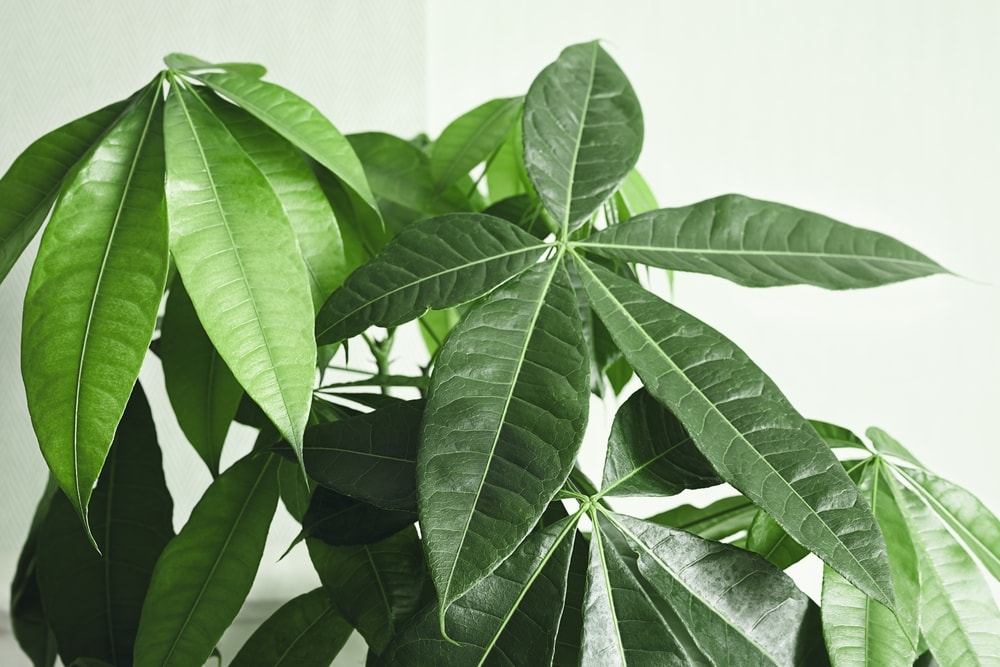
The money tree is easily “frightened” by shocking events and reacts by dropping most or all its leaves. For instance, if the roots are disturbed, that may lead to a “panic attack”. Constant repotting and transporting can have the same effect. Even if you expose it to overly hot or cold air for a couple of hours, that might also cause the plant to say goodbye to its leaves.
What’s the solution here? Just give it a couple of months to grow the leaves back (around mid-spring). If nothing’s happening, this could also be the side effect of overwatering (often, there’s more than one cause). The key here is to be patient and never make any sudden, radical moves and let the plant guide your hand.
3. Have the Leaves Turned Yellow?

The money tree grows best in bright, indirect light. If you expose it to full sunlight for long hours, that will make the leaves turn yellow or brown. And if you fail to notice these signs at an early stage, the leaves will start to wither and, eventually, drop. That’s right: overwatering isn’t the only cause of dying leaves. The sun can quite literally burn the whole plant or stop leaf growth.
The same problems are caused by a lack of sunlight, too. Remember: even when the leaves get indirect exposure, they still use that light for photosynthesis. This is a critical process. Without it, the stems won’t have enough energy to grow, fight off diseases, and produce new seeds. You can get the money tree back in shape by moving the pot slightly closer or farther from the window. Also, rotate the pot every time you water it.
4. Is the Money Tree Soft and Weak?
A wilting and drooping money plant doesn’t exactly look like it’s going to grant you prosperity and happiness. Lucky for us, this is yet another widespread condition that’s (relatively) easy to fix. The first thing to check would be the temperature. Again, we’re dealing with a tropical plant here. This means it prefers above-average temps (65–80°F) and can’t handle anything lower than 55 degrees.
That said, if the temperature is too high, the leaves will start to wilt just as quickly. The plant could also be suffering from low humidity levels (which also causes brown tips). For steady growth, Pachira aquatica prefers the moisture levels to be slightly higher than 50%. If you’re having a hard time with that, consider buying a humidifier. It should be able to bring the levels up by 15–20%. And don’t forget about misting!
5. Is The Soil Overly Dry?
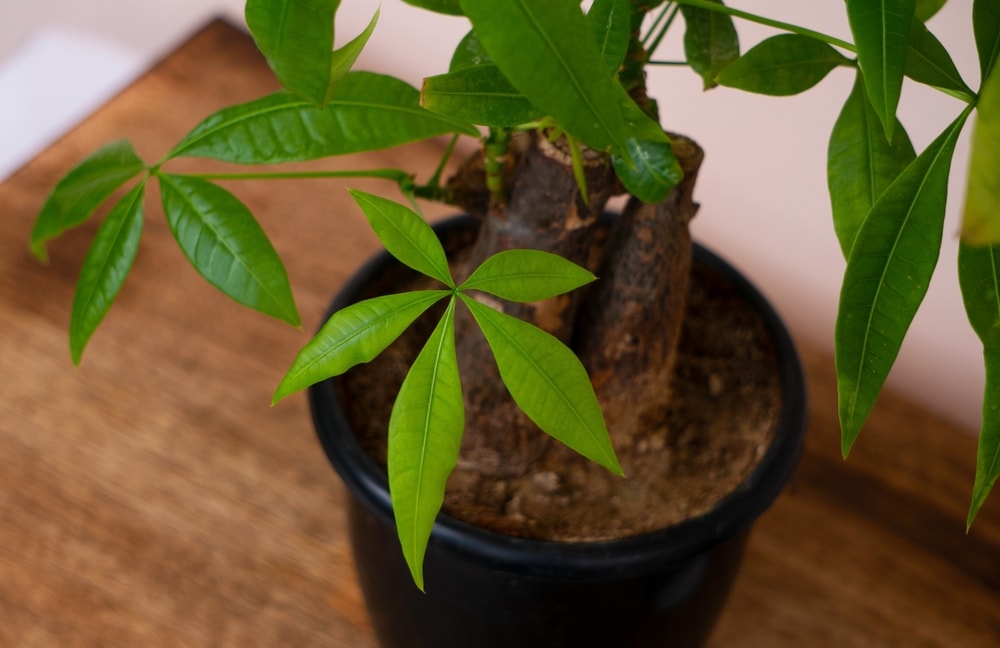
Along with water, sunlight, and nutrients like nitrogen, water is a key element for plant growth. That’s why you need to worry about under-watering just as much as you’re worried about over-watering. Now, to the naked eye, dry and damp soil doesn’t look that different. So, make a habit of checking on the soil once a week or so to make sure the soil isn’t too soggy or dry.
Begin with the surface, and if it’s dry as an Arizona mountain, go a bit deeper. You can take a quick look at the drainage holes as well. If there are water drops at the bottom of the pot/container, that lets you know the soil doesn’t need to be watered just yet. Instead, remove those droplets from the dish. The money plant grows best when watered regularly and thoroughly.
6. Are The Roots White or Black?
This one’s a bit tricky, as we don’t usually see the roots unless they’re poking through the soil or escaping via the drainage holes. Still, without the roots, there will be no growth. A quick look at the color should give you some insight into the well-being of the roots. When they’re white, that means you’ve got nothing to worry about. Black, in turn, is a clear sign that the plant is slowly dying.
Roots turning black are a common side effect of rotting. If left untreated, the disease will spread quickly, paralyzing most of the money tree. So, put some gloves on and carefully remove the plant from the container. Is it proving to be a bit of a challenge? Then you should break the pot (like maybe if it’s made of ceramic). To save the plant, cut out the stricken roots and move the rest to a fresh-new pot.
7. Is the Plant Growing Very Slowly?
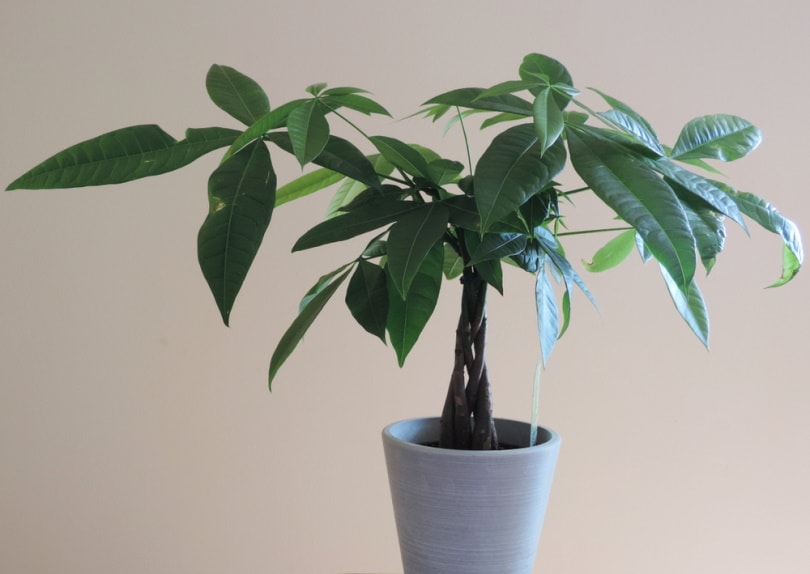
In capable hands, pruning is an incredible tool. It helps shape the plant to your liking and cut off any dead or diseased leaves. You can even remove new stems if you want to. However, when done poorly, pruning will make the money tree suffer and slow the growth rate. Now, it’s recommended to do the trimming in spring (that’s the growing season). If you do it in winter, that may result in stalled growth.
The same is true for weak, unhealthy plants. This is important: pruning for aesthetic reasons and for cutting out dead roots are two different things. You should, without a doubt, cut out the black roots, no matter how frail the money tree is. But try to leave the rest of it untouched. Otherwise, you’ll make it harder for Pachira aquatica to recover.
8. Have Bugs Taken Over the Container?
For the money tree, mealy bugs and aphids are the main enemies. The list also includes spider mites, whiteflies, and scales. The problem is these are tiny pests, and you might not even know they’re there. To avoid that, check on the plant regularly with a magnifier. The sooner you fight the crawlers, the better. Lukewarm water is the best remedy for a minor infestation.
It won’t hurt the tree but will scare the pests away. You can hand-pick them as well. Alcohol is an even better solution. Dip a rag or some cotton swabs in it and get to work! The money tree won’t die right away if it’s attacked by a pest or two. In contrast, when they’re in large numbers, that will be an issue. If that’s the case, don’t be afraid to treat them with a pesticide.
How Hard Is It to Save a Dying Money Plant?
Well, this mostly depends on your luck. If the money tree is too far gone, you won’t be able to save it. On the bright side, it’s quite tough and can take a beating. Even if you remove most of the roots or cut out an entire stem, repotting may help bring it back to life. Use brand-new soil for the new container and add some fertilizer and water to the mix to get the plant started.
First, check for any signs of under or over-watering. Both issues can be fixed by changing your watering habits. Next, see whether the leaves are crowded with bugs or not. If pests are the issue, a little bit of water, alcohol, and mild pesticide should deal with that. Again, moving the plant to a bigger pot with larger drainage holes will ensure a speedy recovery.
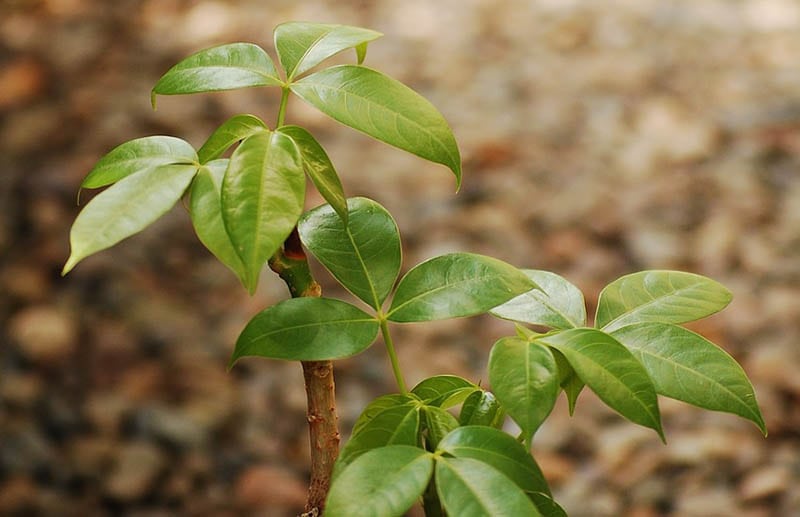
What’s the Average Lifespan?
In nature, the money tree grows in swamps. It’s a tropical tree that thrives in indirect sunlight, above-average humidity levels, and rich soil. On average, in the wilderness, it lives for 2–3 decades or even more. However, as a houseplant, it usually lasts for 10–12 years. When properly maintained, it may stick around for 15 years, but that’s about it.
To increase the lifespan and avoid root rot and other diseases, follow our recommendations on watering, fertilizing, repotting, humidity, and temperature. With this plant, the “less is more rule” applies quite often. So, be very careful and thoughtful when cutting, transporting, or feeding the money tree so that you don’t kill it with your own hands!
Is the Money Tree Good for Your Health?
If we’re talking about the nuts, the answer is no: they are rich in CPFAs (cyclopropenoid fatty acids). Relatively recent research has shown that 5–6 rats that were fed Pachira aquatica nuts died soon after eating them. The one rodent that survived had severe health problems. So, keep your pet as far from these nuts as possible! And what about the effects on humans?
The oil from money tree seeds is frequently used as food and for medical purposes. However, it can still be dangerous. On the bright side, the leaves do a great job of purifying the air by “handling” toxins in the atmosphere. They consume radiation as well (great news if you’ve got lots of electronic devices in the room). Lastly, the plant can calm one’s nerves and relieve stress.
Conclusion
The money tree has been a go-to houseplant across the States and around the world for many decades. And that shouldn’t come as a surprise. This plant is beautiful and long-lasting. Plus, as an ancient legend has it, Pachira aquatica can make the owner happier, healthier, and richer. As a tropical plant, it does require care, and regular maintenance, though.
So, if you want to see it prosper, it’s important to keep your eyes on the plant and to recognize alarming signs. Yellow leaves, black roots, and soggy soil are the most common side effects of a money tree that needs your immediate attention. Fortunately, adequate watering, proper sun exposure, and repotting can help you save it!
- Cyclopropyl Fatty Acids in Walnut
- Root Rot In the Garden
- Plantnet-Project.Org – Pachira aquatica (PROSEA)
- Guiana Chestnut, Pachira Aquatica
- Pachira Aquatica
- Lighting For Indoor Plants
- Home&GardenInformationCenter.Edu – Money Plant
- NYBG.Org – Money tree (Pachira Aquatica)
- Pruning Trees to Speed Growth
- How Long Does A Money Tree Live?
- 10 Benefits of Money Plants
Featured Image Credit: Lifesummerlin, Shutterstock
Contents


